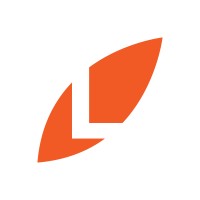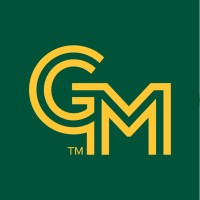Company Cyber Security Posture
NANA
NA Company Details
NA
NA
NA
NA
NA
NA
Scan still pending
NA
NA
Between 200 and 800
This score is AI-generated and less favored by cyber insurers, who prefer the TPRM score.
 NA Global Score
NA Global Score.png)

Company Scoring based on AI Models
| Model Name | Date | Description | Current Score Difference | Score |
|---|---|---|---|---|
| AVERAGE-Industry | 03-12-2025 | This score represents the average cybersecurity rating of companies already scanned within the same industry. It provides a benchmark to compare an individual company's security posture against its industry peers. | N/A | Between 200 and 800 |
Company Cyber Security News & History
| Entity | Type | Severity | Impact | Seen | Url ID | Details | View |
|---|
Company Subsidiaries

NA
Access Data Using Our API

Get company history
.png)
NA Cyber Security News
Unlocking quality education through UTSA’s online learning initiatives
UTSA's fully online undergraduate degree programs moved from No. 85 in 2023 to No. 57 this year and into the top 20% of the more than 399 ranked institutions.
Advarra, a vendor used by BCM reports cybersecurity incident
In November 2023, Baylor College of Medicine was informed of a cybersecurity incident involving Advarra, a vendor the College uses to ...
TeamFiltration Tool Abused in Entra ID Account Breach
It allows security professionals to perform various tasks like user enumeration, password spraying, data exfiltration from services (like ...
Bristol Myers Squibb Foundation, Texas Children's Global HOPE, & Baylor College of Medicine Global Health Launch Program to Combat Sickle Cell Disease in Sub-Saharan Africa
The Bristol Myers Squibb Foundation is proud to be working in partnership with these local health care professionals to turn the tide against ...
Federal funding disruptions roil health system-led research
Johns Hopkins University researchers testing out technology to improve epilepsy diagnoses were in a state of shock last month when the ...
St. Mary’s University partners with Baylor College of Medicine in Medical Track Program
“Baylor College of Medicine is a premier medical school; one that is highly ranked in Texas and the U.S.,” Macrini said. “We are thrilled to ...
Baylor College of Medicine diagnoses 41.2% return for endowment
The endowment had returned -3.6% for the fiscal year ended June 30, 2020. The report did not provide three- or five-year annualized returns ...
$3M Center to Advance At-Home Health Care Technology
A multi-institution partnership that includes Caltech aims to develop clinically validated technologies to remotely monitor patient health.
Baylor Model United Nations Team Will Welcome More Than 300 High School Students for Conference
More than 300 high school students from 17 different schools, primarily from Texas, Oklahoma and Louisiana, will gather to take on the role of international ...

NA Similar Companies

Laureate Education, Inc.
For more than 20 years, we have remained committed to making a positive impact in the communities we serve, by providing accessible, high-quality undergraduate, graduate, and specialized degree programs. We know that when our students succeed, countries prosper, and societies benefit. We take very

George Mason University
George Mason University is Virginia’s largest and most diverse public research university. Located near Washington, D.C., Mason enrolls more than 40,000 students from 130 countries and 50 states, and has a residential population of more than 6,000 students. Mason has grown rapidly over the past half

University of Central Florida
Founded in 1963 to provide talent for Central Florida and the growing U.S. space program, UCF has been making an impact on the state, the nation — and outer space — ever since. With 13 colleges and more than 230 degree programs, your passion lies at one of our campus locations designed to help you

The University of Queensland
For more than a century, The University of Queensland (UQ) has maintained a global reputation for delivering knowledge leadership for a better world. The most prestigious and widely recognised rankings of world universities consistently place UQ among the world's top universities. UQ has also wo

Kwangwoon University
During the difficult Japanese colonial rule of the 1930s, Dr. Kwangwoon Cho established the “Joseon Radio Technical Institute” in 1934, based on his pioneering insights that tomorrow will be determined by practical education and electronic engineering, in the belief that electronics would take the l

University of Louisville
The University of Louisville is a state supported research university located in Kentucky's largest metropolitan area. It was a municipally supported public institution for many decades prior to joining the university system in 1970. The University has three campuses. The 287-acre Belknap Campus is

Frequently Asked Questions
Explore insights on cybersecurity incidents, risk posture, and Rankiteo's assessments.
NA CyberSecurity History Information
How many cyber incidents has NA faced?
Total Incidents: According to Rankiteo, NA has faced 0 incidents in the past.
What types of cybersecurity incidents have occurred at NA?
Incident Types: The types of cybersecurity incidents that have occurred include .
Additional Questions
What Do We Measure?
















Every week, Rankiteo analyzes billions of signals to give organizations a sharper, faster view of emerging risks. With deeper, more actionable intelligence at their fingertips, security teams can outpace threat actors, respond instantly to Zero-Day attacks, and dramatically shrink their risk exposure window.
These are some of the factors we use to calculate the overall score:
Identify exposed access points, detect misconfigured SSL certificates, and uncover vulnerabilities across the network infrastructure.
Gain visibility into the software components used within an organization to detect vulnerabilities, manage risk, and ensure supply chain security.
Monitor and manage all IT assets and their configurations to ensure accurate, real-time visibility across the company's technology environment.
Leverage real-time insights on active threats, malware campaigns, and emerging vulnerabilities to proactively defend against evolving cyberattacks.




